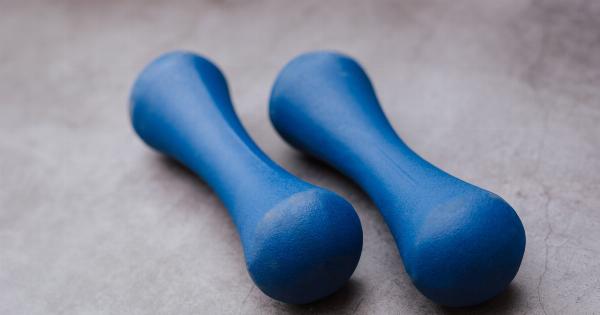Osteoarthritis is a degenerative joint disease that affects millions of people worldwide. It occurs when the protective cartilage in our joints wears down over time, causing pain, stiffness, and decreased mobility.
While there is no cure for osteoarthritis, there are ways to manage its symptoms and improve your quality of life. One effective method is to track your steps and monitor your activity level. In this article, we will explore why tracking your steps is important for managing osteoarthritis symptoms and how you can incorporate it into your daily routine.
The importance of tracking your steps
Tracking your steps is crucial for managing osteoarthritis symptoms because it allows you to monitor your daily activity level.
By keeping tabs on the number of steps you take, you can identify if you are overexerting yourself or if you are not getting enough physical activity. This information is valuable when it comes to managing osteoarthritis because finding the right balance of activity is key to keeping your joints healthy.
Additionally, tracking your steps can help you set realistic goals and gradually increase your activity level. It provides you with a measurable metric, allowing you to see your progress over time.
This sense of achievement can be incredibly motivating and encourage you to stay active despite the challenges posed by osteoarthritis.
How to track your steps
There are several methods you can use to track your steps. Here are three popular options:.
1. Fitness trackers
Fitness trackers, such as smartwatches or activity bands, are convenient tools for monitoring your steps. These devices use built-in accelerometers to detect your movement and calculate the number of steps you take.
Many fitness trackers also provide additional features like heart rate monitoring and sleep tracking, which can further enhance your overall health and well-being.
2. Smartphone apps
If you don’t have a fitness tracker, you can use smartphone apps to track your steps. There are numerous apps available for both iOS and Android devices that utilize your phone’s built-in sensors to count your steps.
Some popular options include Google Fit, Apple Health, and Fitbit. These apps often offer additional features like goal setting, activity challenges, and progress tracking.
3. Pedometers
Pedometers are simple and affordable devices that can be clipped onto your clothing or carried in your pocket to track your steps. These devices work by detecting motion and converting it into step counts.
While they might lack the advanced features of fitness trackers or smartphone apps, pedometers are a cost-effective option for anyone looking to monitor their daily steps.
Incorporating step tracking into your routine
Now that you know the importance of tracking your steps and the different methods available, it’s time to incorporate it into your routine. Here are a few tips to help you get started:.
1. Set realistic goals
Begin by setting realistic step goals for yourself. If you are just starting, aim for a number that is slightly challenging but achievable. As you become more comfortable, gradually increase your daily step count.
Remember to listen to your body and avoid pushing yourself too hard, as this can exacerbate your osteoarthritis symptoms.
2. Make it a habit
Consistency is key when it comes to tracking your steps. Make it a habit to wear your fitness tracker, carry your pedometer, or keep your smartphone app running throughout the day.
Incorporate step tracking into your daily routine, just like brushing your teeth or eating meals. The more consistent you are, the better insight you will gain into your activity level and how it affects your osteoarthritis symptoms.
3. Get creative with activities
Tracking your steps doesn’t mean you have to stick to traditional forms of exercise like walking or jogging. Get creative with your activities to make step tracking more enjoyable. Try dancing, gardening, swimming, or even cleaning your house.
The important thing is to keep moving and stay active throughout the day.
4. Monitor and adjust
Regularly monitor your step count and assess how it affects your osteoarthritis symptoms. If you notice that certain activities or a high step count worsen your pain, you may need to make adjustments.
Consider consulting with a healthcare professional or a physical therapist who can help tailor your activity level to manage your symptoms effectively.
Conclusion
Tracking your steps is a valuable tool for managing osteoarthritis symptoms.
By monitoring your daily activity level, setting realistic goals, and making step tracking a habit, you can gain insight into your body’s needs and customize your activity level accordingly. Finding the right balance of activity is crucial in managing osteoarthritis and improving your overall well-being. So, start tracking your steps today and take control of your osteoarthritis symptoms!.































